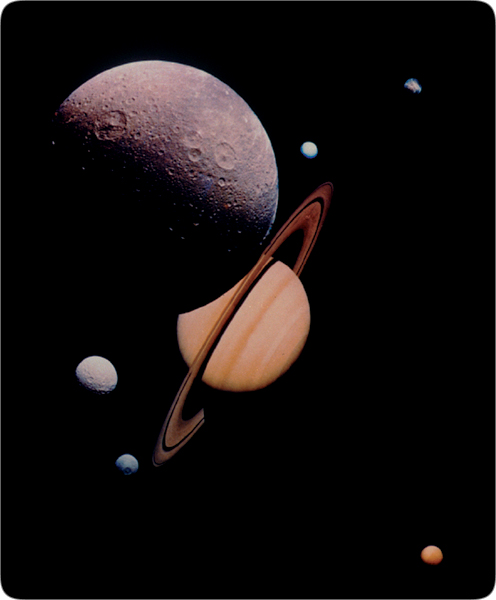Below is the online edition of In the Beginning: Compelling Evidence for Creation and the Flood,
by Dr. Walt Brown. Copyright © Center for Scientific Creation. All rights reserved.
Click here to order the hardbound 8th edition (2008) and other materials.
43. Strange Planets
Many undisputed observations contradict current theories on how the solar system evolved.a One theory says that planets formed when a star, passing near our Sun, tore matter from the Sun. More popular theories hold that the solar system formed from a cloud of swirling gas, dust, or larger particles. If the planets and their known moons evolved from the same material, they should have many similarities. After several decades of planetary exploration, this expectation is now recognized as false.b [See Figure 23.] According to these evolutionary theories:
Backward-Spinning Planets. All planets in our solar system should spin in the same direction, but Venus, Uranus,c and Pluto rotate backwards.d [See "Is Pluto a Planet?" on page 30.]
Backward Orbits. If planets and moons evolved from swirling dust clouds as is commonly taught, each of the almost 200 known moons in the solar system should orbit its planet in the same direction as the planet spins, but more than 30 moons have backward orbits.e Furthermore, Jupiter, Saturn, Uranus, and Neptune have moons orbiting in both directions.
Tipped Orbits.
- Moons. The orbit of each of these moons should lie very near the equatorial plane of the planet it orbits, but many, including Earth’s moon, are in highly inclined orbits.f
- Planets. The orbital planes of the planets should lie in the equatorial plane of the Sun. Instead, the orbital planes of the planets typically deviate from the Sun’s equatorial plane by 7 degrees, a significant amount.
Angular Momentum. The Sun should have about 700 times more angular momentum than all its planets combined. Instead, the planets have 50 times more angular momentum than the Sun.h

Figure 24: Saturn and Six of Its Moons. Saturn has 62 known moons. One of them, named Phoebe [FEE-bee], is dominated by water,g and its orbit is almost perpendicular to Saturn’s equator. Why? As explained in "Earth: The Water Planet" (Category 44 below), it is difficult enough for evolutionist astronomers to explain why Earth (the water planet) has so much water. So why would tiny Phoebe be a water-rich rock? Pages 341–385 will explain why that rock and its water were once part of Earth. (But, don’t skip pages 110–150.)